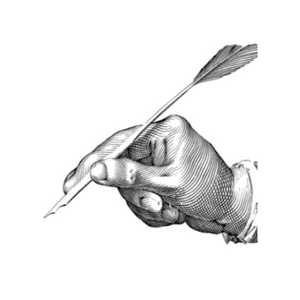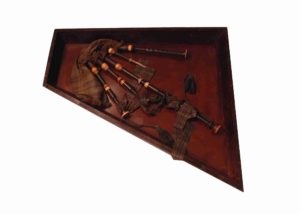Major-General David Stewart of Garth
Just before heading up the stairs to Gallery 4 visitors will see the painting of someone who, on first glance, might not look like a
Home » Blog » Soldier Stories » Life in the trenches

Life in the trenches
Luckily, troops were not expected to serve entirely on the front line. The above diagram states that on average a solider would spend 15% of their time in the trenches in the firing line. Throughout their service they would rotate between the three trenches: the front line, the support trench and the reserve trench, they also spent a short period in rest before returning to the three trenches. The time spent in each line varied throughout the war, as in busier periods soldiers were required to spend far longer in the front line than usual, with less time at rest. In a year only around two months would be spent at rest, and not typically at leave, as a soldier often only received two weeks of leave per annum if he was lucky!
Daily Routine:
A day in the trenches would begin with the Stand-to-Arms, a process observed by both sides on the Western Front. Before dawn, the soldiers would be roused by their commanding officers; they then climbed onto the fire step to guard against raids from the other side. Afterwards, the troops would fire into the early-morning mist in the direction of the enemy in a ritual dubbed the “morning hate.” It was believed that this would ensure their safety at dawn, which along with dusk was believed to be the time when enemies might launch a surprise attack.
If a soldier was fortunate, rum would then be issued, and time was then provided to clean the rifles, which was a challenge, but necessary in the dirt and mud of the trenches. Officers then inspected the rifles, and if deemed satisfactory breakfast would be served. In quieter periods during the war, the two sides would have a “breakfast truce,” in which breakfast could be peaceably eaten. Unfortunately, hot meals were not a luxury that could be afforded for much of the war and soldiers were reliant on the majority of their food coming from tins or cans, typically in the form of unappetizing salted meat and stale crackers.
After breakfast, the company commander inspected his men, and assigned duties to each. These ranged from the repairing of duckboards, refilling sandbags and the draining of waterlogged trenches using pumping equipment.
At dusk, the ritual of Stand-To-Arms was repeated again and once complete supply and maintenance duties were undertaken. These included the fetching of rations and water or the patrol of No Man’s Land. Some soldiers were put on sentry duty: standing on the fire step of the trench and observing the enemy to make sure of no surprise attacks or advances.
Often at night the army chose to rotate the troops between the trenches, this process could take several hours, but was vital to ensure the recuperation and regrouping of the soldiers.
With thanks to The Great War – 1914-18 for the diagram and information.
https://www.facebook.com/pages/The-Great-War-1914-1918/507577359374520?fref=photo
Just before heading up the stairs to Gallery 4 visitors will see the painting of someone who, on first glance, might not look like a

Rosie Waine is the William Grant Foundation Research Fellow at the National Museum of Scotland. Here she writes how the Black Watch Museum & Castle
The Black Watch Museum archive holds a considerable quantity of primary source material relating to the Battle of Loos, 24th September 1915. This event has
Subscribe to Our Newsletter
© The Black Watch Castle and Museum
The Black Watch Regimental Trust is a charitable company registered in Scotland | Charity No: SC005848
